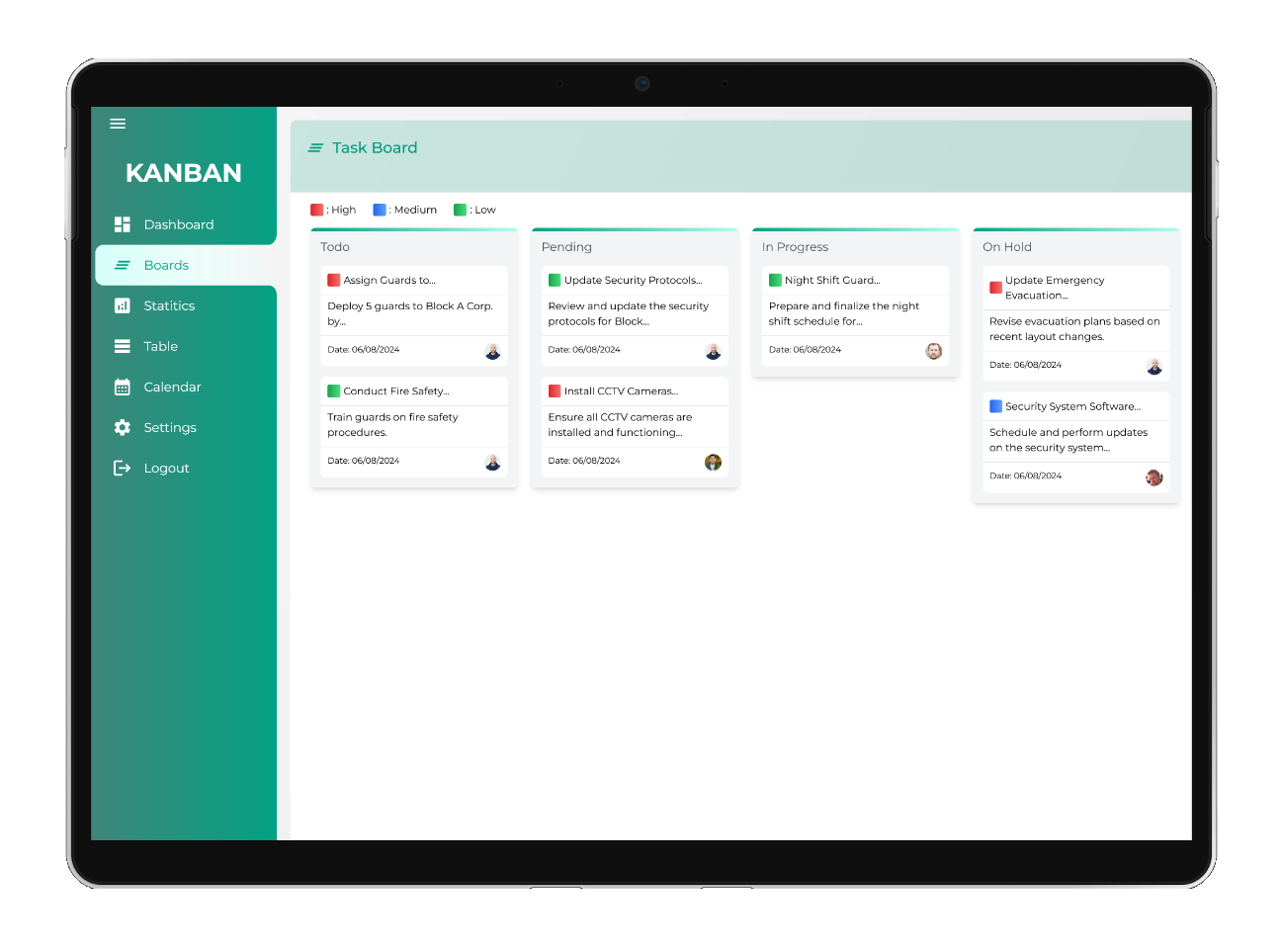In the rapidly evolving landscape of project management, organizations are continually seeking innovative tools to enhance productivity and streamline workflows. One such tool gaining significant traction is the digital Kanban board. Originally developed in the manufacturing sector, Kanban has transformed into a versatile task management methodology that offers a visual approach to workflow management. This blog explores the features, benefits, and future of digital Kanban boards in task management.

1. Understanding Kanban Boards
Kanban boards are visual management tools that display tasks in a structured format. Typically, they consist of columns representing different stages of a process (e.g., "To Do," "In Progress," "Completed"). Each task is represented by a card that can be moved between columns as work progresses. This visual representation allows teams to see the status of tasks at a glance and identify bottlenecks in the workflow.
Digital Kanban boards replicate this functionality in an online format, enabling teams to collaborate in real-time, regardless of their physical location. With features such as drag-and-drop functionality and color-coded cards, digital Kanban boards make it easy to manage tasks and track progress effectively.
2. Benefits of Digital Kanban Boards
a. Enhanced Visualization
One of the primary advantages of digital Kanban boards is their ability to provide a clear visual representation of work processes. Teams can quickly assess the status of various tasks, enabling them to prioritize effectively and allocate resources where needed. This enhanced visualization helps team members understand project timelines and overall progress, fostering a sense of ownership and accountability.
b. Improved Collaboration
Digital Kanban boards facilitate collaboration among team members by allowing real-time updates and comments. Team members can communicate directly on task cards, share feedback, and provide updates without the need for lengthy email threads or meetings. This centralized communication streamlines discussions and keeps all relevant information in one place, enhancing teamwork and collaboration.
c. Increased Flexibility
In today’s fast-paced business environment, flexibility is crucial for success. Digital Kanban boards offer the adaptability that traditional task management methods often lack. Teams can easily adjust priorities, reassign tasks, and modify workflows as project requirements change. This flexibility ensures that teams can respond quickly to shifting circumstances, enhancing their ability to meet deadlines and deliver results.
d. Enhanced Accountability
With digital Kanban boards, accountability is significantly improved. Each task card displays the assignee, due dates, and progress indicators, making it clear who is responsible for each task. This visibility promotes a culture of accountability, as team members are more likely to stay on track and meet their commitments when their work is visible to others.
3. Key Features of Digital Kanban Boards
To maximize their effectiveness, digital Kanban boards typically come equipped with a range of features, including:
- Customizable Columns: Teams can tailor the board layout to fit their specific workflow, adding or removing columns as needed.
- Task Assignments: Users can assign tasks to specific team members, ensuring clarity on responsibilities.
- Due Dates and Reminders: Task cards can include due dates and automated reminders to keep everyone on track.
- Integrations: Many digital Kanban tools integrate with other productivity applications, such as project management software, communication tools, and file-sharing platforms, creating a seamless workflow.
- Analytics and Reporting: Digital Kanban boards often provide analytics and reporting features, allowing teams to track performance metrics, identify trends, and make data-driven decisions.
4. The Future of Digital Kanban Boards
As the demand for effective task management solutions continues to rise, the future of digital Kanban boards looks promising. Here are a few trends to watch:
a. AI and Automation
The integration of artificial intelligence (AI) and automation into digital Kanban boards will likely enhance their capabilities. AI can assist with task prioritization, predict potential bottlenecks, and suggest optimal workflows based on historical data. Automation features can streamline repetitive tasks, allowing teams to focus on more strategic initiatives.
b. Enhanced Customization
Future iterations of digital Kanban boards will likely offer even greater customization options. Users may have the ability to create personalized workflows, templates, and dashboards tailored to their specific needs. This level of customization will empower teams to design their task management systems in a way that best suits their processes.
c. Improved Collaboration Tools
As remote work becomes more prevalent, the demand for advanced collaboration tools within digital Kanban boards will continue to grow. Features such as video conferencing integration, real-time editing, and collaborative brainstorming spaces will become increasingly important for enhancing teamwork and communication.
d. Mobile Accessibility
The need for mobile accessibility will also drive the evolution of digital Kanban boards. As more teams adopt flexible work arrangements, having a mobile-friendly version of Kanban boards will enable team members to manage tasks and collaborate on the go, ensuring that productivity is maintained regardless of location.
Conclusion
Digital Kanban boards are revolutionizing the way teams manage tasks and collaborate on projects. Their visual nature, enhanced flexibility, and powerful collaboration features make them a valuable tool for organizations seeking to improve efficiency and productivity. As technology continues to advance, digital Kanban boards will evolve, incorporating AI, automation, and enhanced collaboration tools to meet the changing needs of modern teams. Embracing digital Kanban boards is not just a trend; it’s a strategic move towards optimizing task management in the future.